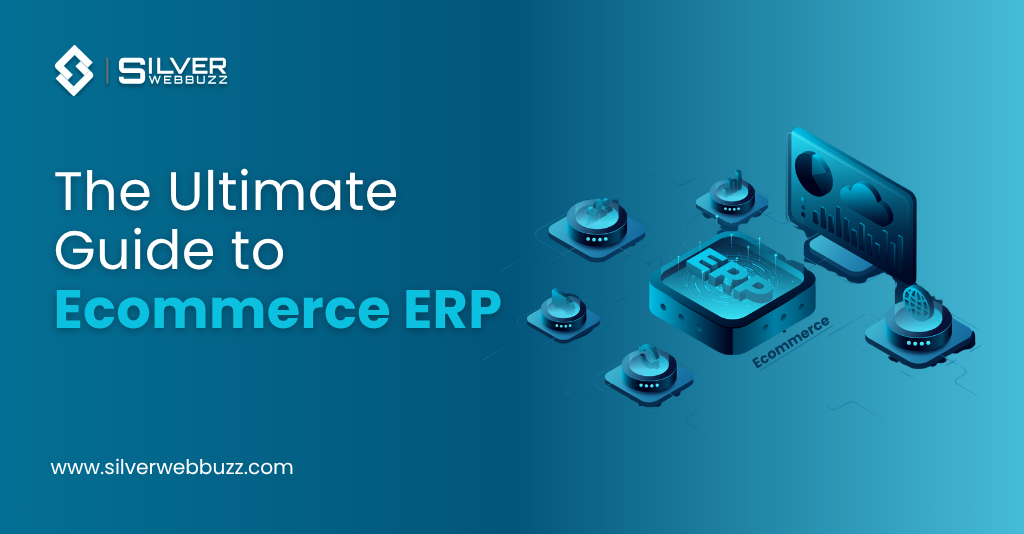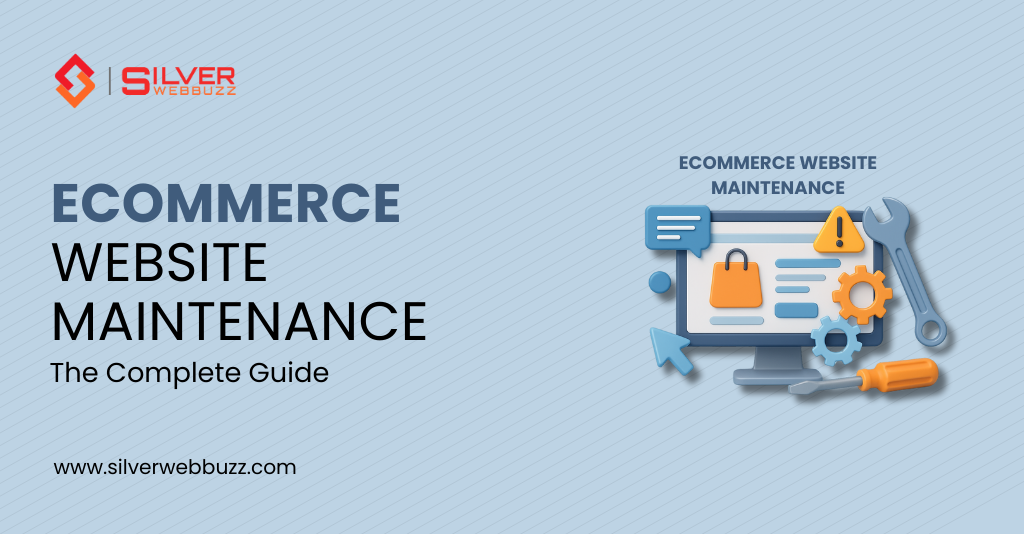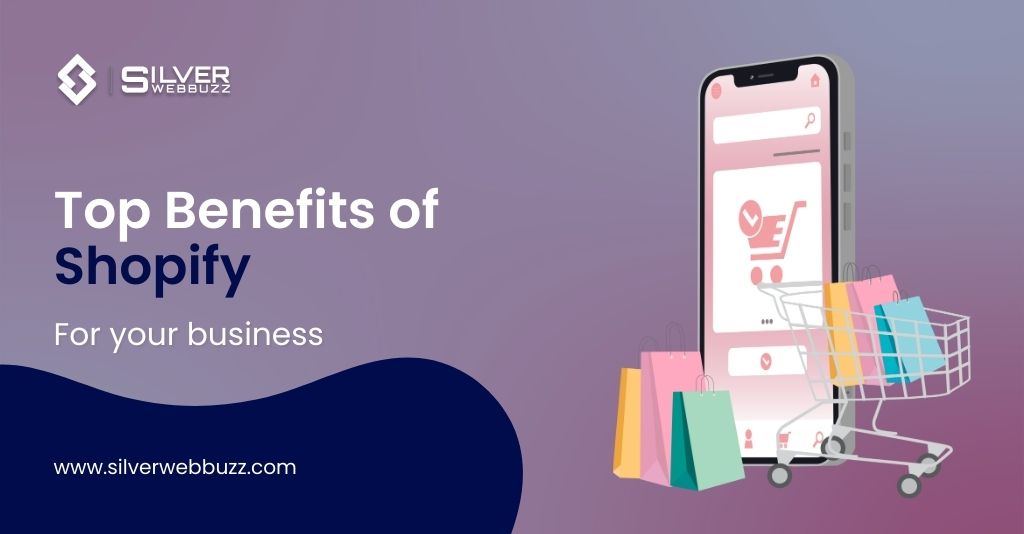Are you drowning in a sea of spreadsheets? Juggling inventory across multiple channels, only to oversell a popular product? Is your finance team manually reconciling sales data from Shopify, Amazon, and your accounting software? If this sounds familiar, you’re not just experiencing growing pains—you’re hitting a wall that only a central nervous system for your business can break through. That system is an ecommerce ERP.
This guide is your definitive roadmap. We will move beyond the jargon to give you a practical, step-by-step understanding of what an ERP for your ecommerce business truly is, how to integrate it, and how to measure its profound impact on your bottom line. We will cover everything from core modules and integration architectures to vendor comparisons and future trends, empowering you to make the right strategic decision for your company’s growth.
Key Takeaways: Your Quick Guide to Ecommerce ERP
- What is an ERP in ecommerce? An Enterprise Resource Planning (ERP) system is a centralized software platform that integrates and manages all core business processes in one place. For ecommerce, this means unifying inventory, orders, customer data, financials, and supply chain management from your storefront, marketplaces, and backend operations.
- Why is ERP and ecommerce integration critical? Integrating your ERP with your ecommerce platform (like Shopify, BigCommerce, or Magento) automates data flow, eliminates manual errors, provides a single source of truth for inventory, and creates a seamless customer experience from checkout to delivery.
- Is an ERP worth the investment? Yes. While there are upfront costs, a well-implemented ecommerce ERP solution delivers significant ROI by reducing operational costs, improving efficiency, enabling scalability, and providing the data insights needed for strategic growth.
- What’s the first step? The journey begins with a thorough needs assessment to understand your unique operational bottlenecks and business goals before you ever look at a single vendor.
What is an Ecommerce ERP and Why Does It Matter?
At its heart, an Enterprise Resource Planning (ERP) system is designed to be the single source of truth for your entire organization. Imagine all your disparate departments—finance, warehouse, sales, customer service, HR—all working from the same real-time data set. That’s the power of an ERP.
When we talk about an ecommerce ERP, we’re referring to an ERP system specifically configured or integrated to handle the unique demands of online retail. While a generic ERP manages business processes, an ecommerce erp integration connects that powerful core to your customer-facing sales channels.
The modern ecommerce landscape is brutally competitive. Customers in the USA and globally expect fast, accurate shipping, real-time inventory updates, and seamless returns. Without a unified system, you’re trying to conduct a symphony orchestra where every musician has a different sheet of music. An ERP is the conductor, ensuring every part of your business plays in perfect harmony.
The result?
- No more overselling stock.
- Drastically reduced manual data entry.
- Accurate financial reporting at the click of a button.
- A complete, 360-degree view of your customer.
- The ability to scale from 100 orders a day to 10,000 without your operations collapsing.
The Core of Your Business: A Deep Dive into ERP Modules
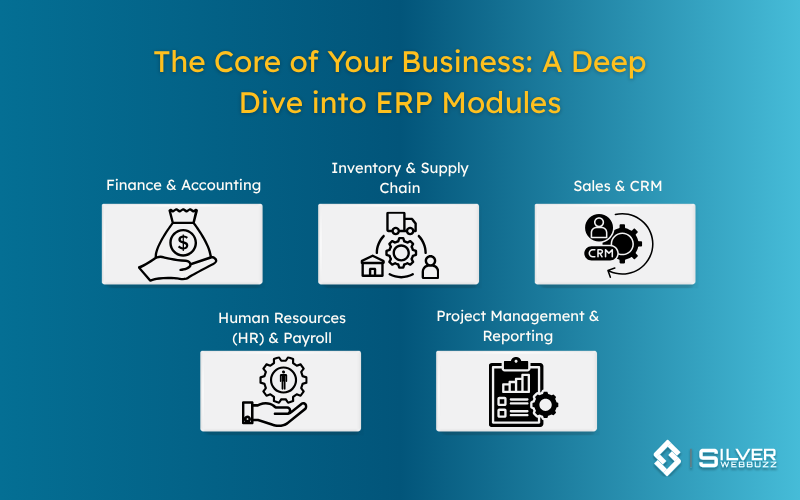
An ERP is not a single piece of software; it’s a suite of integrated applications, known as modules. Each module handles a specific business function. Here are the most critical ones for any growing ecommerce erp software stack.
Finance & Accounting
This is the foundational module of any ERP. It’s the system of record for all financial transactions, automating tasks that are often a major bottleneck for ecommerce businesses.
- Key Functions: General ledger, accounts payable/receivable, cash management, tax management, and financial reporting.
- Ecommerce Impact: Automatically reconciles sales from all channels (your website, Amazon, eBay) with payment gateways (Stripe, PayPal). It provides a real-time view of profitability, down to the individual SKU.
Inventory & Supply Chain Management
For an ecommerce business, this is the operational heart. This module provides a centralized, real-time view of your stock across all locations, including warehouses, 3PL partners, and even physical stores.
- Key Functions: Inventory tracking, order management, warehouse management (WMS), purchasing, and supplier management.
- Ecommerce Impact: Prevents stockouts and overselling by syncing inventory levels to all your storefronts instantly. It optimizes fulfillment by routing orders to the closest warehouse and streamlines the purchasing process by forecasting demand.
Sales & Customer Relationship Management (CRM)
While some businesses use a separate CRM, many modern ERPs include a robust CRM module. This module consolidates all customer interactions and data into one profile.
- Key Functions: Contact management, sales order history, customer service tracking, and marketing automation data.
- Ecommerce Impact: Provides your support team with a complete customer history (past orders, returns, support tickets) when they receive a query. This enables personalized service and helps identify your most valuable customers.
Human Resources (HR) & Payroll
As your business grows, so does your team. An HR module centralizes all employee-related information and processes.
- Key Functions: Employee records, payroll processing, benefits administration, and time tracking.
- Ecommerce Impact: Ensures your warehouse staff, customer service agents, and marketing team are paid accurately and on time. It simplifies onboarding as you scale your team to handle increased order volume.
Project Management & Reporting
This module provides the high-level business intelligence you need to make strategic decisions. It pulls data from all other modules to create dashboards, reports, and forecasts.
- Key Functions: Business intelligence (BI), analytics, dashboard creation, and performance monitoring.
- Ecommerce Impact: Answers critical questions like: “What is my true profit margin on Product X after shipping and marketing costs?” or “Which marketing channel is driving the most profitable customers?” This is where an ERP transitions from an operational tool to a strategic weapon.
Connecting Your Systems: ERP Integration Methods & Architectures
Having a powerful ERP is only half the battle. The magic happens when you connect it seamlessly to your ecommerce platform. This is what erp and ecommerce integration is all about. Choosing the right method is critical for scalability, cost, and maintenance.
Custom vs. Native vs. Middleware vs. iPaaS vs. ESB
There are several ways to integrate erp and ecommerce. Each has its trade-offs.
- Custom Point-to-Point Integration: Developers write custom code to connect your ecommerce platform directly to your ERP. While it offers total flexibility, it becomes a brittle “spaghetti” of connections that is expensive to maintain and breaks easily as systems are updated.
- Native Connectors: Some ERP vendors and ecommerce platforms offer pre-built, “native” integrations. These are often the easiest and fastest to set up but may lack the flexibility to handle unique business rules or customizations.
- Middleware: This is a separate piece of software that acts as a central translation hub. It sits between your ecommerce platform and your ERP, managing the flow of data. It’s more robust than point-to-point but often requires specialized developers to manage.
- Integration Platform as a Service (iPaaS): This is the modern, cloud-based approach to middleware. iPaaS solutions (like Celigo or Boomi) provide user-friendly, low-code platforms with pre-built connectors for hundreds of applications. They are scalable, flexible, and the preferred choice for most modern ecommerce businesses.
- Enterprise Service Bus (ESB): This is a more traditional, heavy-duty form of middleware used by large enterprises with complex, legacy on-premise systems. It’s generally overkill and too complex for most pure-play ecommerce businesses.
Pros & Cons Table of Integration Methods
| Integration Method | Pros | Cons | Best For |
|---|---|---|---|
| Custom Integration | Highly customizable; total control. | Brittle, expensive to build and maintain, high technical debt. | Businesses with truly unique workflows not supported by any other method. |
| Native Connectors | Easy to set up, often low-cost or free. | Limited flexibility, may not support all needed data flows. | Small businesses with very standard, out-of-the-box processes. |
| Middleware | Centralized logic, more scalable than custom. | Can be complex, requires specialized knowledge, often on-premise. | Mid-sized companies with a mix of on-premise and cloud systems. |
| iPaaS | Scalable, flexible, user-friendly, vast library of connectors. | Subscription-based cost, can be complex to configure initially. | Most modern B2B and DTC ecommerce businesses of all sizes. |
| ESB | Extremely powerful, robust, handles high volume. | Very expensive, highly complex, long implementation time. | Large enterprises with extensive legacy, on-premise infrastructure. |
Your Step-by-Step Ecommerce ERP Implementation Roadmap
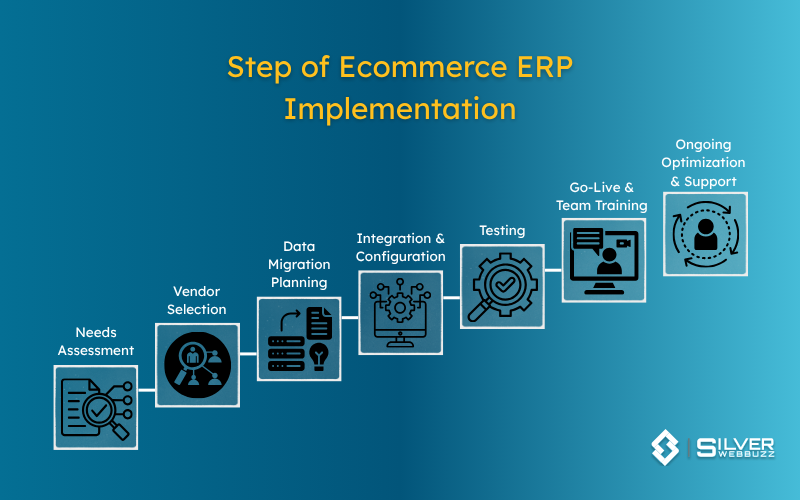
Implementing an ecommerce ERP solution is a major project, but it can be managed effectively with a clear roadmap. Rushing this process is the single biggest cause of failure.
Step 1: Needs Assessment & Requirements Gathering
Before you even think about vendors, map out your current processes. Where are the bottlenecks? What tasks are repetitive? What data do you wish you had? Involve stakeholders from every department—warehouse, finance, marketing—to create a comprehensive list of “must-have” and “nice-to-have” features.
Step 2: Vendor Selection & Vetting
Now, with your requirements list in hand, you can start researching vendors. Shortlist 3-5 potential erp solutions for ecommerce. Request detailed demos that focus on your specific use cases. Don’t watch a generic sales pitch. Ask for reference customers in the USA with a similar business model to yours.
Step 3: Data Migration Planning
This is one of the most underestimated steps. You need a plan to clean, map, and migrate your existing data (customers, products, sales history) into the new ERP. Garbage in, garbage out. A clean data set is non-negotiable for a successful launch.
Step 4: Integration & Configuration
This is where you execute the ecommerce erp integration platform strategy you chose earlier (e.g., configuring your iPaaS). You’ll map data fields between systems: for example, the “SKU” field in Shopify must map to the “Item Number” field in your ERP.
Step 5: Testing, Testing, and More Testing
In a sandbox (test) environment, run through every possible scenario.
- Place a test order on your website. Does it appear in the ERP?
- Update inventory in the ERP. Does it reflect on the storefront?
- Process a return. Does it update financials and inventory correctly?
- This is the phase to find and fix bugs before they affect real customers.
Step 6: Go-Live & Team Training
The “go-live” should ideally happen during a low-traffic period. Once the system is live, comprehensive training for your entire team is paramount. Your staff must understand the new workflows to realize the efficiency gains the ERP promises.
Step 7: Ongoing Optimization & Support
An ERP implementation is not a one-and-done project. As your business evolves, you will need to tweak workflows, add new features, and continue to optimize the system. Ensure you have a solid support plan with your vendor or implementation partner.
Expert Insight: Risk Management & Change Control
The biggest non-technical risk in an ERP project is resistance to change. Your team is used to their old spreadsheets and workflows. To manage this, communicate the “why” behind the project early and often. Appoint “champions” within each department to build excitement and provide peer support. A formal change control process is also vital to prevent “scope creep”—the slow addition of un-planned features that can derail your timeline and budget.
Real-World Impact: Industry Use Cases & ROI Benchmarks
An ERP’s value isn’t theoretical. It delivers tangible results across different ecommerce models.
B2B Ecommerce
For businesses selling to other businesses, an ERP is critical for managing complex pricing, customer-specific catalogs, and credit limits. A B2B ecommerce erp integration can automate the quote-to-cash cycle and provide self-service portals for clients to view order history and reorder.
- Real ROI Example: A B2B distributor saw a 40% reduction in order processing errors and a 50% faster reorder cycle for key clients after integrating their ERP with their B2B portal.
Direct-to-Consumer (DTC)
Fast-growing DTC brands often struggle when their Shopify or BigCommerce store outpaces their backend operations. An ERP automates order fulfillment, manages complex inventory from multiple suppliers, and provides a single view of the customer for marketing personalization.
- Real ROI Example: A DTC apparel brand achieved a 20% reduction in inventory carrying costs by using ERP demand forecasting and reduced their “time-to-ship” by an average of 24 hours.
Omnichannel Retail
For retailers selling online, in-store, and through marketplaces, an ERP is the only way to maintain sanity. It enables “buy online, pick up in-store” (BOPIS), ship-from-store, and accurate inventory visibility across all channels.
- Real ROI Example: An omnichannel retailer was able to increase sales by 15% simply by exposing their in-store inventory online, preventing lost sales from online stockouts.
Manufacturing
For ecommerce businesses that manufacture their own products, an ERP with a manufacturing module is essential. It manages bills of materials (BOMs), production scheduling, and raw material procurement, linking the factory floor directly to online sales.
- Real ROI Example: A custom furniture maker used their ERP to reduce raw material waste by 10% and improve production scheduling, leading to a 30% faster order-to-delivery cycle.
Choosing Your Partner: A Comparison of Top ERP Vendors
The ERP market is crowded. Here is a look at some of the top players in the ecommerce erp space. For a deeper dive, it’s always wise to consult analyst reports like the Gartner® Magic Quadrant™ for Cloud ERP for Product-Centric Enterprises.
Vendor & Platform Comparison Table
| Vendor | Best For | Pros | Cons |
|---|---|---|---|
| NetSuite | Fast-growing, mid-market to enterprise DTC and B2B businesses. | True all-in-one cloud platform (ERP, CRM, Ecommerce). Highly scalable and customizable. | Can be expensive; complex implementation requires certified partners. |
| Acumatica | Mid-market businesses, especially in manufacturing and distribution. | Flexible deployment (cloud or on-premise), unique resource-based pricing (no per-user fees). | Less brand recognition than NetSuite; can have a steeper learning curve. |
| Brightpearl | Retail and wholesale businesses focused heavily on omnichannel operations. | Built specifically for retail; strong inventory, order, and warehouse management. | Not a full “finance-first” ERP; often requires integration with accounting software like QuickBooks or Xero. |
| SAP S/4HANA Cloud | Large enterprises with complex global operations and supply chains. | Extremely powerful, industry-leading functionality, robust analytics. | Very expensive, long and complex implementation cycles, overkill for most SMEs. |
| Microsoft Dynamics 365 | Businesses already heavily invested in the Microsoft ecosystem (Office 365, Azure). | Strong integration with other Microsoft products, flexible modular approach. | Can be complex to configure, licensing can be confusing. |
Understanding the Investment: ERP Cost Considerations & Calculating ROI
Ecommerce erp pricing is more than just a software license fee. To understand the true cost, you must consider the Total Cost of Ownership (TCO).
The Full Cost Breakdown
- Software Licensing/Subscription: This is the most visible cost. Most cloud ERPs charge a recurring annual or monthly fee, often based on the number of users or resources consumed.
- Implementation Services: This is a significant one-time cost paid to the ERP vendor or a third-party implementation partner. It covers the work from discovery and configuration to data migration and go-live. This can often be 1-3x the annual software cost.
- Integration Costs: The cost of your iPaaS subscription or custom development work to connect your ERP to your ecommerce store and other systems.
- Customization & Development: Any work required to build features or workflows not included out-of-the-box.
- Training Costs: The cost of training your team on the new system.
- Ongoing Support & Maintenance: The annual fee for vendor support and system updates.
How to Calculate Your ERP ROI
To justify the investment, you need to calculate the potential Return on Investment (ROI).
ROI Formula: ( (Financial Gain from Investment – Cost of Investment) / Cost of Investment ) * 100
1. Financial Gains: Quantify the benefits.
- Efficiency Gains: (Hours saved on manual tasks per week) x (52 weeks) x (Average employee hourly wage)
- Inventory Reduction: (Reduction in inventory carrying costs, e.g., 20%) x (Average inventory value)
- Increased Sales: (Projected sales lift from prevented stockouts or faster shipping)
- Reduced Errors: (Cost of shipping errors, returns, and appeasements avoided)
2. Cost of Investment: Use the full TCO calculated above.
A positive ROI, with a payback period of 18-36 months, is typically considered a strong justification for an ERP project.
The Future is Now: AI, Automation, and the Next Generation of ERP
The world of ecommerce erp development is not standing still. The next wave of innovation is focused on intelligence and hyper-automation.
The Rise of AI and Machine Learning
Artificial Intelligence (AI) and Machine Learning (ML) are moving from buzzwords to practical features within modern ERPs.
- Predictive Analytics for Demand Forecasting: AI algorithms analyze historical sales data, seasonality, and market trends to predict future demand with far greater accuracy than humans, optimizing inventory levels.
- Intelligent Order Routing: AI can automatically route orders to the most efficient fulfillment center based on stock levels, shipping costs, and delivery speed.
- AI-Powered Chatbots for Customer Service: Integrated chatbots can handle common customer queries (“Where is my order?”) by pulling real-time data directly from the ERP, freeing up human agents for more complex issues.
To unlock these capabilities in your ERP system, partnering with a trusted AI development company can ensure customised, scalable, and intelligent solutions tailored to your business needs.
Cloud ERP & No-Code/Low-Code Integrations
The shift to the cloud is nearly complete. Cloud ERPs offer greater accessibility, scalability, and faster innovation cycles. This trend is coupled with the rise of ecommerce erp integration services built on low-code platforms (iPaaS), which empower non-technical business users to build and manage their own integrations, reducing reliance on expensive developer resources.
Best Practices & Common Pitfalls to Avoid
Successfully navigating an ERP project requires diligence. Here’s how to stay on the right track.
Best Practices for Success:
- Get Executive Buy-In: The project must be championed from the top down.
- Focus on Data Quality: Start cleaning your data before the project begins.
- Invest in Training: User adoption is everything. A powerful system is useless if no one knows how to use it.
- Start Simple, Then Iterate: Don’t try to boil the ocean. Go live with core functionality first, then add more complex workflows in a phased approach.
- Choose the Right Implementation Partner: Your partner is as important as the software. Check their references and experience in your specific industry.
Common Pitfalls to Avoid:
- Scope Creep: Letting unplanned features and requests derail the project timeline and budget.
- Poor Data Migration: Migrating messy, inaccurate data into your new system, thereby replicating old problems.
- Underestimating Change Management: Ignoring the human element and the need to guide your team through a new way of working.
- Choosing the Wrong System: Selecting an ERP based on price alone or a flashy demo, rather than a deep analysis of your core requirements.
- Lack of a Clear Project Manager: Not having a single, dedicated person responsible for driving the project forward.
Your Next Steps: Are You Ready for an ERP?
Embarking on an ERP journey is a transformative step that can set the stage for a decade of growth. It’s a complex project, but one that moves your business from reactive problem-solving to proactive, data-driven strategy.
Your Readiness Checklist:
- Are you spending more time managing spreadsheets than growing your business?
- Do you lack real-time visibility into your inventory, leading to stockouts or overselling?
- Is your team bogged down by manual data entry and reconciliation between systems?
- Do you lack the data to make confident decisions about profitability and growth?
- Are your current systems straining to keep up with your order volume?
If you answered “yes” to two or more of these questions, it’s time to seriously consider an ERP.
Conclusion
Start with the internal needs assessment. Don’t call a vendor yet. Gather your team, map your processes, and define what you need to succeed. Use that requirements document as your guide to explore pilot studies and build a strategic roadmap for your ecommerce erp solution development.
Embarking on this journey requires expertise and a guiding hand. As a company with deep experience in ecommerce development services, Silver WebBuzz has helped countless businesses navigate this exact process. We understand that an ERP is more than software; it’s the central pillar of a scalable, efficient, and profitable ecommerce operation. If you’re looking for a partner with proven experience in ecommerce erp development and integration, our team can help you build the right foundation for your future growth.
